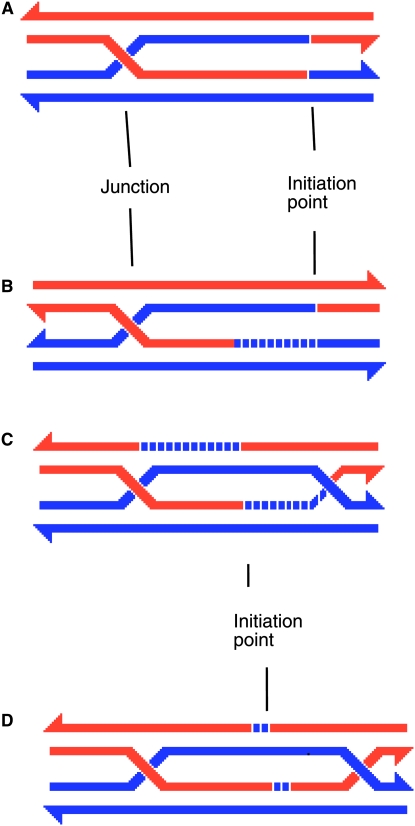Figure 1.—
Hypothetical bimolecular recombination intermediates (joint molecules). Material contributions from the two interacting chromatids are in red and blue. Newly synthesized DNA is in broken lines, with the color indicating the chromatid on which it was templated. The arrowheads indicate the 3′-ends of strands. (A) The intermediate proposed by Holliday (1964) features a reciprocal exchange of single strands of DNA, resulting in symmetric heteroduplex. (B) The intermediate proposed by Meselson and Radding (1975) features a stretch of asymmetric heteroduplex, near the point of initiation of recombination, followed by a stretch of symmetric heteroduplex. (C) The meiotic double-strand-break-repair intermediate as envisioned for yeast (Sun et al. 1991). Heteroduplex is (at least mostly) asymmetric. (D) The meiotic double-strand-break-repair intermediate as envisioned for the Sordaria g locus. Heteroduplex is predominantly symmetric.

